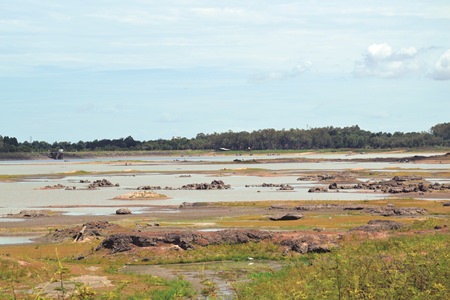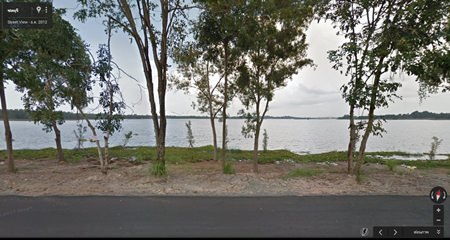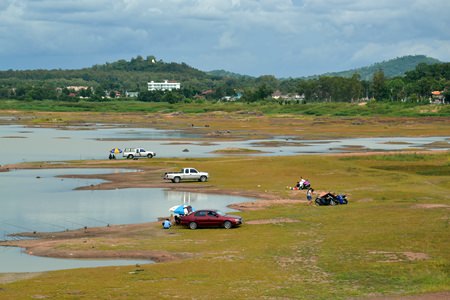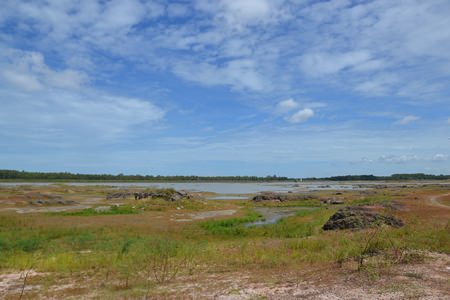The director of the Provincial Waterworks Authority’s Pattaya office has warned that if the area does not get a substantial amount of rain soon, the city could see water shortages as soon as mid-September. Mabprachan Reservoir, shown here nearly dry, is facing the biggest crisis. (Photo by Urasin Khantaraphan)
For weeks, area politicians and water-supply officials have assured Pattaya residents that, despite the severe drought, the city would have plenty of water. But with August ending without the usual onset of a heavy rainy season, those same officials are now backing off those promises.
Suthat Nutpan, director of the Provincial Waterworks Authority’s Pattaya office, warned Aug. 27 that if the area does not get a substantial amount of rain soon, the city could see water shortages as soon as mid-September.
 The director of the Provincial Waterworks Authority’s Pattaya office has warned that if the area does not get a substantial amount of rain soon, the city could see water shortages as soon as mid-September. Mabprachan Reservoir, shown here nearly dry, is facing the biggest crisis. (Photo by Urasin Khantaraphan)
The director of the Provincial Waterworks Authority’s Pattaya office has warned that if the area does not get a substantial amount of rain soon, the city could see water shortages as soon as mid-September. Mabprachan Reservoir, shown here nearly dry, is facing the biggest crisis. (Photo by Urasin Khantaraphan)
The PWA said that, as of Aug. 3, the five main reservoirs feeding water to the city held a combined 12.4 million cu. meters of water. Pattaya’s normal usage rate of 235,000 cu. meters a day is about 20,000 cu. meters a day more than those sources will be able to supply.
Mabprachan Lake, now nearly dry, is facing the biggest crisis, able now to produce 48,000 cu. meters per day. Other sources contributing to Pattaya’s water supply are the Sak Nok Lake with 7,200 cu. meters per day, Nong Klang Dong Lake with cu. meters per day, Banglamung Reservoir at cu. meters per day, and Map Yang Porn Lake at 21,600 cu. meters per day.
 Mabprachan Reservoir as it appeared in 2012 (Above) when it was full, compared to now (Below) almost completely dried up.
Mabprachan Reservoir as it appeared in 2012 (Above) when it was full, compared to now (Below) almost completely dried up.

The city began campaigning Aug. 1 for the city’s 700,000 residents and 400,000 businesses to conserve water. On Aug. 15, the PWA began cutting water pressure at night, which saves 54,000 cu. meters per day.
It also has impacted outlying areas of Banglamung, Takhiantia, Nong Plalai, Nongprue, Huay Yai and Najomtien.
Suthat said measures also have been taken to obtain reserve water from Rayong’s Pluakdaeng and Bang-pakong reservoirs.





